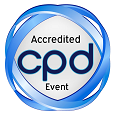5th International summit on Medical Biology & Bioengineering
Chicago, USA

Biography
Biography: Janet Roveda
Abstract
This children and adult sleep apnea prognosis system employs an IoT application portal, to perform sleep apnea prognosis, to help with sleep apnea diagnosis, to monitor sleep apnea treatment, and to offer personal health education. The core component of the system is a set of machine learning algorithms. Our system allows a couple of low cost sleep apnea devices to reach high accurate sleep apnea monitoring/diagnosis/prognosis results, although we use high end devices such Phillips’ products in the development of our prototype system. We also plan to develop wearable sensors, such as pulse oximeter pulse oximeters, electrocardiogram (ECG) sensors, and electroencephalogram (EEG) sensors to work with our system and to provide optimal care and cost balance. Comparing with other sleep apnea questionnaires, our new system provides personalized questionnaires. The backend data mining program monitors patients’ responses and adjust the contents of the questionnaires in real time. One key application of our new system is pediatric sleep apnea. Most sleep care products are currently focused only on adults. However, sleep apnea also has serious impacts on children's brain development. At least 2% of children have sleep apnea in the US. Most parents, however, never realize that their children have sleep apnea. Compared with adults, children in general have higher oxygen saturation levels, faster heart beats, and very different physiological measurements that change as they age. Sleep apnea among children requires a different set of indexes and thresholds in terms of measurements. With a different set of parameters, features and indices, specifically designed for the pediatric sleep apnea application, our tools can provide accurate diagnosis for children with apnea, and stimulate their patients to seek medical care. Our system employs 3D simulation to monitor sleep quality and apnea treatment results, with real time feedback from treatment devices. Coupled with physiological sensors, the new system can improve the dynamic treatment regimes (DTRs) by using reinforcement learning algorithms.

